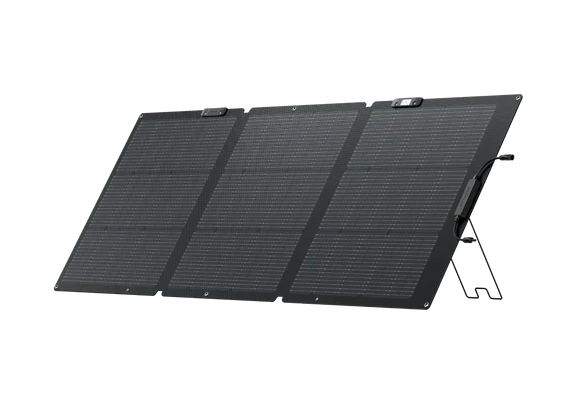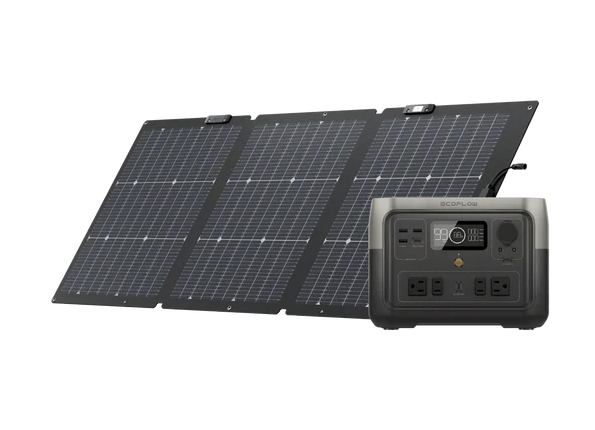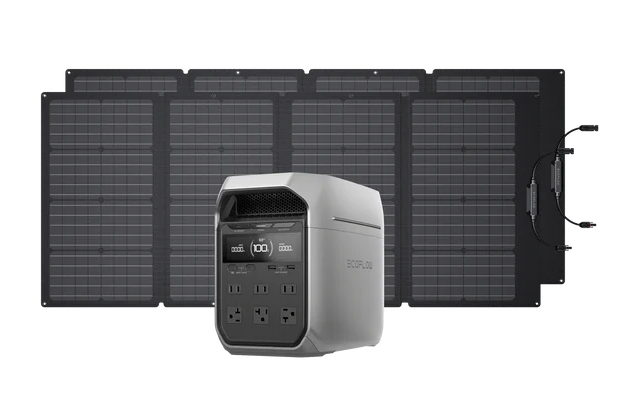How Much Energy Can a Solar Panel Generate?
Solar panels offer a path to clean, personal energy. Many people wonder exactly how much power a single panel can produce. The answer depends on two main things: the panel's power rating and the specific conditions where it operates. A panel's performance is not a fixed number. It changes based on where you are and how you use it.
This blog will explain the basics of solar power measurement. Then, it will cover the key factors that affect how much energy a panel generates. You will learn how to calculate your panel's output. Finally, we will look at what you can power with that energy.
Understanding Solar Panel Power Ratings
Before you can calculate energy output, you need to know the basic terms. These terms appear on every solar panel's specification sheet. Understanding them is the first step to figuring out your power potential.
Watts vs. Kilowatt-Hours (kWh): A Simple Explanation
The terms "watt" and "kilowatt-hour" are often confused, but they measure two different things. A Watt (W) is a unit of power. It measures the rate at which energy is produced or used at a specific moment. Think of it like the speed of a car. A 100-watt light bulb uses power at a higher rate than a 60-watt bulb. A kilowatt (kW) is simply 1,000 watts.
A kilowatt-hour (kWh) is a unit of energy. It measures the total amount of power used over a period of time. Following the car analogy, a kilowatt-hour is like the total distance traveled. If you run a 1,000-watt appliance for one full hour, you have used 1 kWh of energy. Your home electricity bill measures your energy consumption in kWh. So, knowing how many kWh your solar panel produces is key to understanding its value.


What Solar Panel Efficiency Means for Energy Output
Solar panel efficiency describes how well a panel converts sunlight into usable electricity. It is expressed as a percentage. For example, if a panel has 20% efficiency, it means 20% of the sunlight hitting its surface is converted into electrical energy.
Today’s average solar panel efficiency is around 21%, but high-performance models can go even further. The EcoFlow 400W Portable Solar Panel offers up to 23% conversion efficiency, which means more electricity from the same amount of sunlight—especially helpful on cloudy days or during shorter daylight hours. This higher efficiency is one of the reasons it's a solid choice for those who need maximum power in a compact, portable setup.
The type of solar cell inside the panel is a major factor in its efficiency.
Monocrystalline solar panels are made from a single, pure silicon crystal. This pure structure allows electrons to move more freely, resulting in the highest efficiency levels, often between 20% and 25%.
Polycrystalline solar panels are made from multiple silicon fragments melted together. This process is less expensive but creates imperfections that slightly reduce efficiency, typically to a range of 15% to 18%.
A higher efficiency rating is very important. A more efficient panel generates more electricity from the same amount of physical space compared to a less efficient one. This concept is best understood as power density. For example, a 400W panel might produce about 18 watts per square foot. A panel with higher efficiency could generate more watts from the same square foot. For anyone with limited space, like on an RV roof or a small campsite, a high-efficiency panel is extremely valuable. It delivers more power without requiring a larger, heavier setup.
Key Factors That Influence Solar Panel Generation
A solar panel's wattage rating is determined under perfect laboratory conditions, known as Standard Test Conditions (STC). In the real world, the amount of energy you actually generate will be different. Several environmental factors have a major impact on performance.
Your Geographic Location and Sun Exposure
The most significant factor determining a solar panel's output is the amount of sunlight it receives. This is measured in "Peak Sun Hours." A peak sun hour is not just any hour of daylight. It is specifically one hour during which the intensity of sunlight, or solar irradiance, reaches an average of 1,000 watts per square meter.
The number of peak sun hours a location receives varies greatly. It depends on your geographic latitude and the time of year. Places closer to the equator get more direct sunlight and therefore have more peak sun hours annually. A panel in Arizona will generate much more power than the identical panel in Washington because Arizona gets more peak sun hours. The table below shows the average daily peak sun hours for several U.S. cities, which illustrates this difference clearly.
Panel Placement: Angle and Direction Matter
How you position your solar panel is critical for capturing the maximum amount of sunlight. In the Northern Hemisphere, panels should always face true south. A south-facing orientation exposes the panel to the sun for the longest period each day. If a southern placement is not possible, west is the next best direction, followed by east. North-facing roofs are generally not suitable for solar installations.
The tilt angle of the panel is also very important. The ideal angle is one where the sun's rays hit the panel perpendicularly. This angle changes with the seasons and your latitude. A general rule for fixed installations is to set the tilt angle equal to your location's latitude. For instance, the optimal tilt for a panel in St. Louis, Missouri, is around 32.5 degrees. Getting both the direction and angle right can significantly boost your energy generation.
Weather, Temperature, and a Panel's Performance
Beyond sun hours and placement, daily conditions also affect output. Shade is a major enemy of solar production. If trees, buildings, or other objects cast a shadow on even a small part of a panel, the energy output can drop dramatically. This is because solar cells are often wired in series, so shading one cell can act like a bottleneck and reduce the performance of the entire panel.
Anything that covers the surface of the panel will block sunlight. Dust, dirt, pollen, bird droppings, and snow all reduce the amount of light reaching the solar cells. Regular cleaning, perhaps every six months or more often in dusty or snowy areas, helps maintain optimal performance.
It may seem strange, but high temperatures actually hurt a solar panel's efficiency. Most electronic devices function better when they are cool, and solar panels are no exception. While intense sunlight is good, the heat that comes with it causes the panel's voltage to decrease, which in turn lowers its power output. A panel's performance can start to decline when its surface temperature rises above 95°F (35°C). For this reason, cold, sunny days are actually the best conditions for solar energy generation. For fixed panels, it is good to have space between the panel and the roof to allow air to circulate and cool the panel down.


How to Calculate Your Solar Panel's Daily Energy Output
Now that you know the key variables, you can put them together to estimate your panel's daily energy production. This section provides a straightforward formula to calculate how much energy, in watt-hours, your panel can generate on an average day.
A Simple Formula for Estimating Power
You can get a good estimate of your panel's daily output with a simple calculation. The formula multiplies the panel's power rating by the number of peak sun hours your location receives.
The formula is:
Daily Energy Output (Watt-hours) = Panel Wattage (Watts) × Peak Sun Hours
This calculation gives you a theoretical maximum output under good conditions.
A Real-World Example: A 100W Panel in Two Different Cities
Let's use a standard 100W solar panel and the peak sun hour data from our earlier table to see the formula in action. The difference between the two locations can be quite large.
In Phoenix, Arizona, which gets about 6.52 peak sun hours per day:
100 W × 6.52 hours = 652 Watt-hours (Wh) per day
In Seattle, Washington, which gets about 3.97 peak sun hours per day:
100 W × 3.97 hours = 397 Watt-hours (Wh) per day
As you can see, the same 100W panel can produce over 60% more energy in Phoenix than in Seattle, simply due to the difference in available sunlight. This shows why location is so important for setting realistic expectations.
Accounting for Real-World Power Loss
The simple formula provides a useful starting point, but it assumes perfect conditions. In the real world, some energy is always lost. These losses come from several sources, including the inefficiency of the inverter (if you are converting DC to AC power), resistance in the wiring, and the negative effects of dust and heat on the panel.
To get a more realistic estimate, experts often apply a "derate factor" or "fudge factor" to the calculation. A conservative factor of 75% (or 0.75) accounts for these typical real-world losses.
The more realistic formula is:
Realistic Daily Output (Wh) = Panel Wattage (W) × Peak Sun Hours × 0.75
Let's apply this factor to our examples:
- Phoenix: 652 Wh × 0.75 = 489 Wh per day
- Seattle: 397 Wh × 0.75 = 298 Wh per day
These lower numbers give a much better prediction of the actual energy you can expect to collect and use on an average day.


Maximizing Your Energy Generation for Portable Power
The principles of solar generation apply to all panels, but using portable power for camping, RVs, or emergencies comes with its own set of challenges. This section focuses on how to get the most from a mobile solar setup where size, weight, and ease of use are paramount.
Choosing a High-Efficiency Portable Panel
When you are on the move, the size and weight of your gear matter. A high-efficiency portable solar panel is incredibly valuable because it gives you more power from a smaller and lighter package. This means less to carry and an easier setup at your campsite or during an emergency.
To meet the demands of portability and performance, you should look for a panel designed specifically for these needs. For example, the EcoFlow NextGen 160W Portable Solar Panel is a strong choice. It addresses many of the challenges discussed earlier.
It has a very high 25% conversion efficiency thanks to its advanced N Type TOPCon solar cells. This feature helps it generate more power from its compact surface area.
It is lightweight at approximately 12.3 lbs (5.6 kg), an important quality for easy transport and setup.
It is built for outdoor life with an IP68 waterproof and dustproof rating. This gives it the durability needed to perform well in rain and other harsh weather.
Most importantly, it comes with an adjustable angle bracket and an integrated solar angle guide. This feature provides a direct solution to the panel placement problem. It helps you easily position the panel at the best angle to the sun, which maximizes your energy capture without any guesswork.
Practical Tips for Better Output
Beyond choosing the right panel, a few simple habits can help you squeeze more power from your portable setup.
Keep Panels Clean: A quick wipe with a soft cloth can remove dust, pollen, and dirt that accumulates during outdoor use. Keeping the panels clean helps absorb sunlight better.
Avoid Shade: Be mindful of your surroundings. A shadow from a tree branch, your tent, or your vehicle can significantly cut your power input. Move your panel as the sun moves to keep it in direct light.
Track the Sun: The sun's position in the sky changes throughout the day. For optimal results, adjust your panel's angle and direction a few times a day to keep it pointed directly at the sun.
Use a Monitoring System: When you connect your panel to a portable power station, you can often use its display to see the real-time solar input in watts. This immediate feedback shows you how your adjustments are affecting power generation.
What Can You Power with a Solar Panel?
Knowing your panel can generate 500 Wh or 1,600 Wh is one thing, but what does that mean for your daily life? This section connects the numbers to the real-world devices and appliances you want to use.
Powering Your Adventures: Camping and RV Life
A portable solar panel paired with a power station can transform an off-grid experience. It provides the power needed to run a wide variety of devices, bringing comfort and convenience to your campsite or RV.
With a modest solar setup, you can power:
Mini-fridges or electric coolers to keep your food fresh and drinks cold without the hassle of ice.
CPAP machines allow for a safe and comfortable night's sleep far from any wall outlet.
Lights, fans, and portable speakers to create a pleasant atmosphere at your campsite.
All your essential electronics, including phones, tablets, laptops, cameras, and drones, so you can stay connected and capture memories.
Reliable Energy for Emergency Preparedness
During a power outage caused by a storm or other event, a solar generator—which is a solar panel paired with a portable power station—offers a clean, quiet, and reliable source.
Unlike traditional gas generators, solar generators produce no fumes, so the power station component is safe to use indoors. They are also very low-maintenance and can provide power continuously as long as there is sunlight to recharge the battery. In an emergency, a solar generator can be used to run critical devices, such as:
- Smartphones and radios to receive information and communicate with family.
- Essential medical equipment.
- Lights to keep your home safe after dark.
- A small refrigerator to preserve food and important medications.
Conclusion about Energy of a Solar Panel Generate
A solar panel's energy generation is not a mystery. It is a predictable result based on a few key factors. The panel's wattage rating sets the baseline. Your geographic location, which determines your daily peak sun hours, is the most important variable. Finally, how you position your panel toward the sun directly impacts its performance.
With this knowledge, anyone can effectively harness the power of the sun. You can calculate your needs and choose the right equipment. You can power your outdoor fun, your remote work, or your home during an emergency, all with clean, renewable energy.